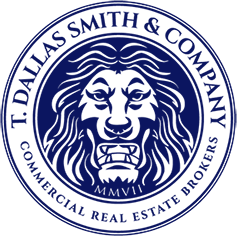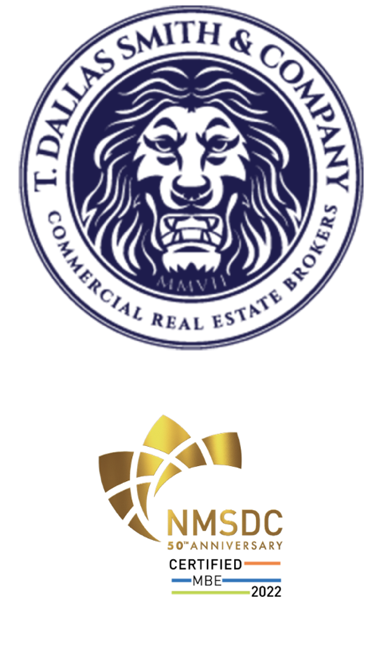 SOURCE: Capital Analytics Associates
SOURCE: Capital Analytics Associates
In an interview with Focus:, T. Dallas Smith, founder and CEO of T. Dallas Smith & Company, discussed his recent transition to focus on transformative developments in underdeveloped areas, particularly in Atlanta, and the rise of data center projects. He emphasized the importance of innovation and adapting to changes in commercial real estate, including the potential for converting office spaces into housing.
What have been the key achievements and major projects that have kept you busy over the last 12 months?
I’ve stepped down as the president of T. Dallas Smith and Company. My new focus is on establishing a development company within the existing framework. This initiative is like starting from scratch, akin to how I began with the brokerage company. My passion lies in the excitement and challenge of building something new from the ground up. This year, I’ve been particularly involved in transformative developments, which are projects aimed at revitalizing historically underdeveloped areas. My commitment is especially strong towards the Westside of Atlanta, my hometown. These areas, once vibrant and thriving mixed-income communities, have seen decline due to various socio-economic changes over the decades. My goal is to restore their former glory and appeal, especially to the younger generation who prefer living closer to urban centers.
What are the specific areas of development you are focusing on?
My focus is twofold. Firstly, I’m deeply invested in transformative developments in neglected neighborhoods. I aim to bring back the allure these communities once had, particularly in the Black areas where I grew up. Streets like MLK, historically affluent and vibrant, have unfortunately become synonymous with decline. I’m determined to change that narrative by reinvesting in these communities, making them desirable again for modern living.
Secondly, I’m concentrating on data centers. The burgeoning energy demand, driven by advancements in AI, makes the development of efficient data centers crucial. It’s more cost-effective to build new, technologically advanced data centers than to retrofit older buildings. This dual focus on transformational developments and data centers is not just about business growth but also about positively impacting communities and staying ahead in the technology sector.
How do you think your work in transformational development and your mission fare in a competitive market?
I must admit that many people still don’t recognize these sites as valuable opportunities. In Atlanta, for example, the majority of transformational developments are not initiated by local developers. This pattern is not unique to Atlanta but is common across the United States. If you’re a local developer, especially one who doesn’t share my background, you’re likely raised with certain biases. You’re taught to avoid the other side of the tracks, which often meant avoiding areas that were predominantly Black or minority neighborhoods. This mindset, ingrained from childhood, continues to influence developers even as adults.
Take Northside Drive in Atlanta as an example. It’s a clear manifestation of historical redlining. One side of the street sees development, while the other side, marked by the redline, remains underdeveloped. This pattern is evident across the country. The interesting thing is that local developers seem to be blinded by this invisible wall of historical prejudice. However, developers from outside the area, say from Los Angeles or Germany, can look at these sites objectively. They see the potential where locals only see an invisible barrier. To give you a specific instance, look at the Centennial Yards project, a transformational development led by a team from Los Angeles. Or consider the South downtown project, initially led by a German team, now taken over by David Cummings of Tech Village. Cummings, though a local now, was able to acquire the project at a fraction of its cost. It’s not about where you’re from but about seeing the real value in these locations.
How is commercial real estate evolving in the region, particularly in terms of asset classes, and how are you responding to these trends?
The biggest winner in recent times, without a doubt, is the warehouse and industrial sector. When I started in 1982, my focus was on industrial real estate where rents were around $2.50 per square foot. Now, it’s the hottest segment in the market. This surge is driven largely by companies like Amazon. The rise of online shopping means that any product, from dog food to toothpaste, is being delivered directly from warehouses to our front doors. Consequently, traditional retail has been hit hard. The future of retail is about creating unique experiences, something that can’t be replicated online. It has to be more than just a product delivery system; it needs to offer something that draws people out of their homes.
As for office spaces, they’ve taken a hit too, primarily due to COVID-19. People realized they could work effectively from home. I prefer the office environment for its sense of community and culture, which is hard to replicate over Zoom or Teams. Big companies like UPS are already asking employees to return to the office, signaling a potential rebound for office spaces. However, whether it will return to its former glory is uncertain.
Another exciting development in the office space segment is the conversion of these buildings into housing. This is part of the transformational projects I’m enthusiastic about. We are currently exploring the conversion of office buildings into residential spaces. I’m part of a team bidding to transform a 1 million square foot building into housing. This project, if successful, could be a game-changer. It’s not just about solving the housing shortage; it’s also about efficiently utilizing the excess office space that exists. The structural integrity of these buildings is incredible: they’re built to last. If we can execute this right, it could serve as a model for similar transformations across the country. It’s a solution that addresses two significant issues simultaneously: providing much-needed housing and repurposing the abundance of office space.
As you look forward to the next few years, what are your goals and visions for T. Dallas Smith & Company?
Last year, I wrote a book titled In the Black, primarily to share the story of how T. Dallas Smith & Company came to be and to inspire those who’ve faced obstacles like I did. It’s a message of hope and resilience, especially for people of color who’ve been told they’re too much of this or not enough of that. The book is also a tribute to my mentor, Herman Russell, who had a wealth of knowledge and experience that should have filled many books.
Looking ahead, I’m focused on continuing this narrative, highlighting our transformative community projects and data center developments. We’re creating a space where everyone in our team can be their authentic selves. It’s about more than just business; it’s about building a community where everyone has a place at the table. My vision is to see T. Dallas Smith & Company grow into a billion-dollar company, making transformative impacts and offering hope to those who’ve been overlooked. We’re here to change the narrative and show that with resilience and authenticity, anything is possible.
Click here to view the original article

